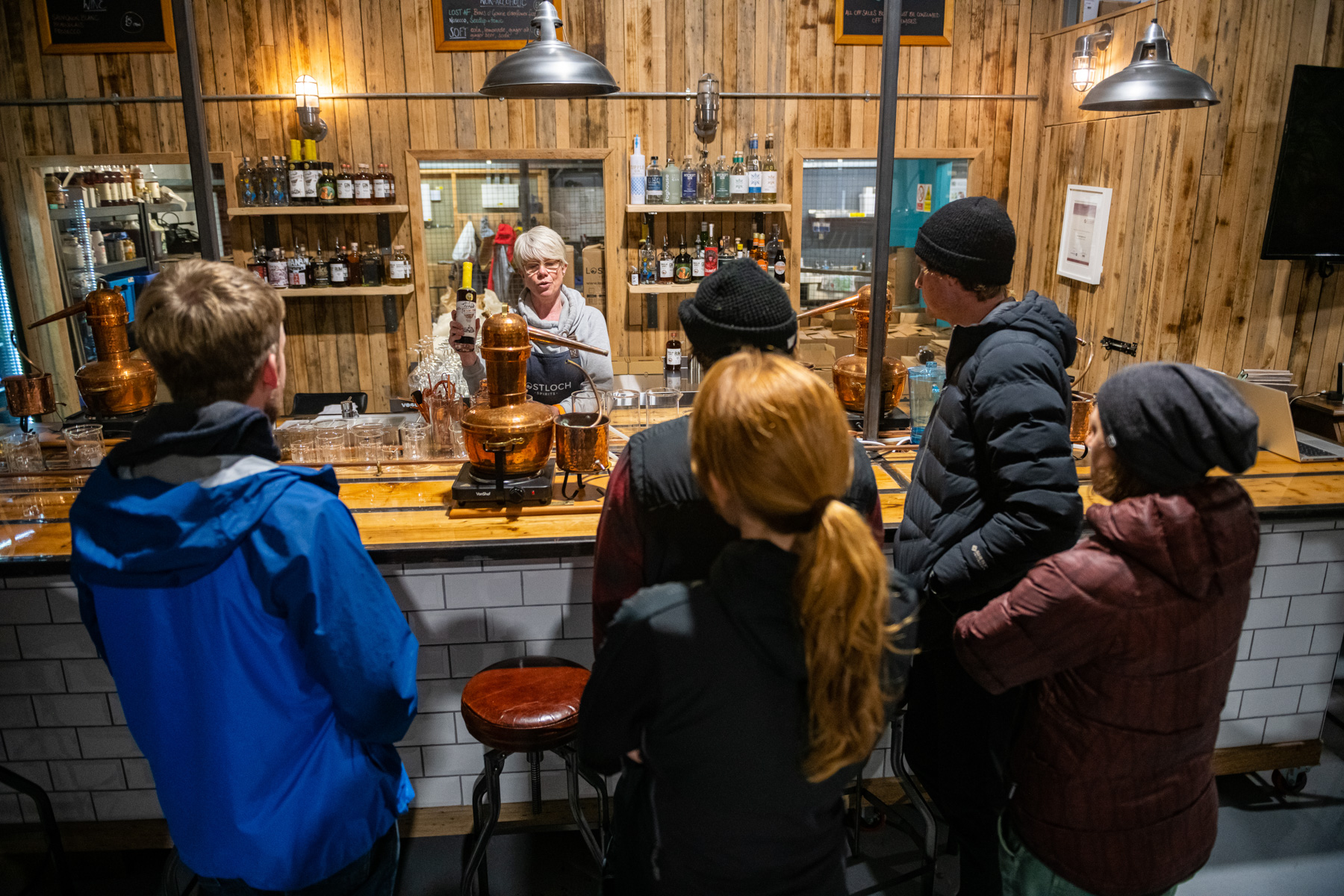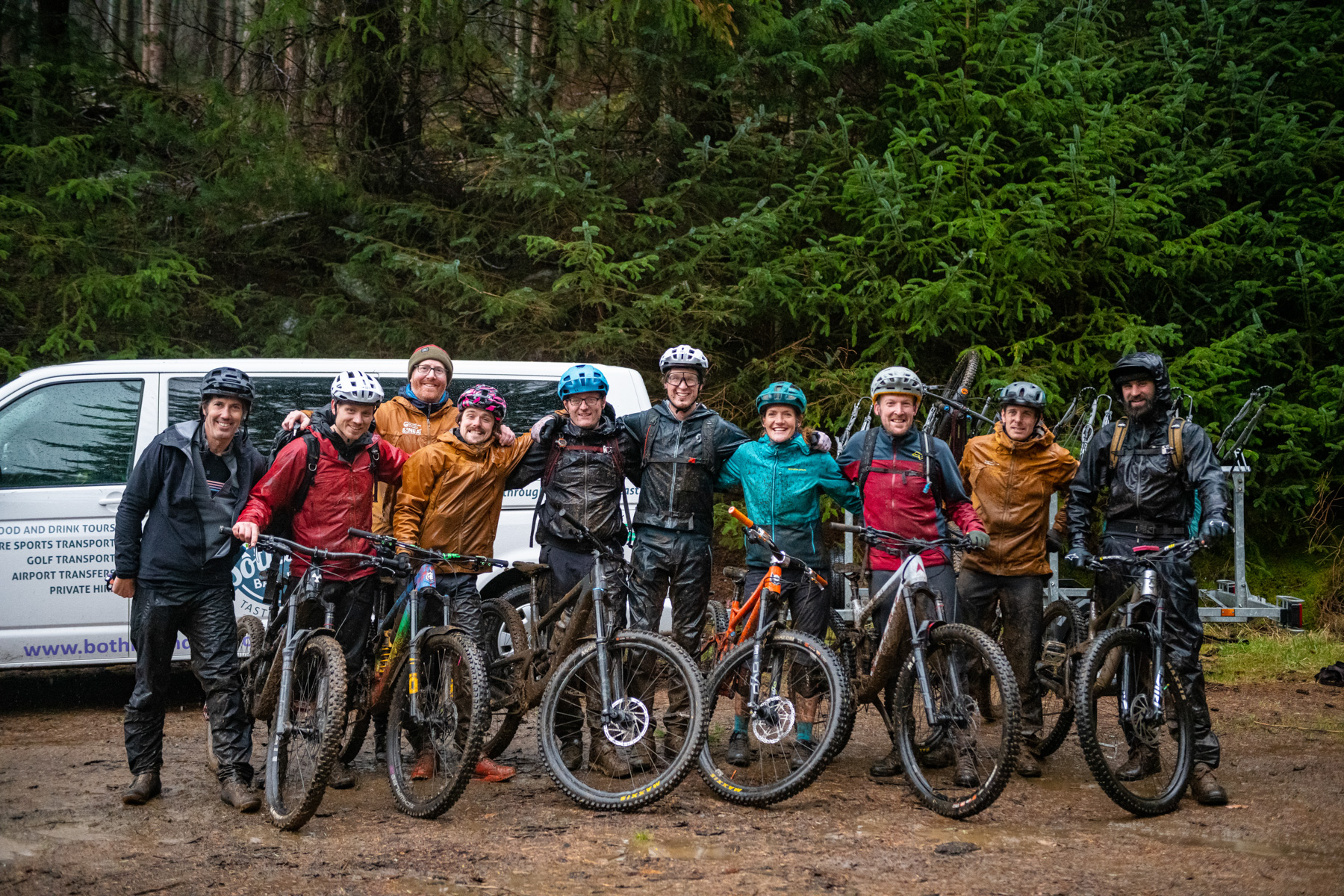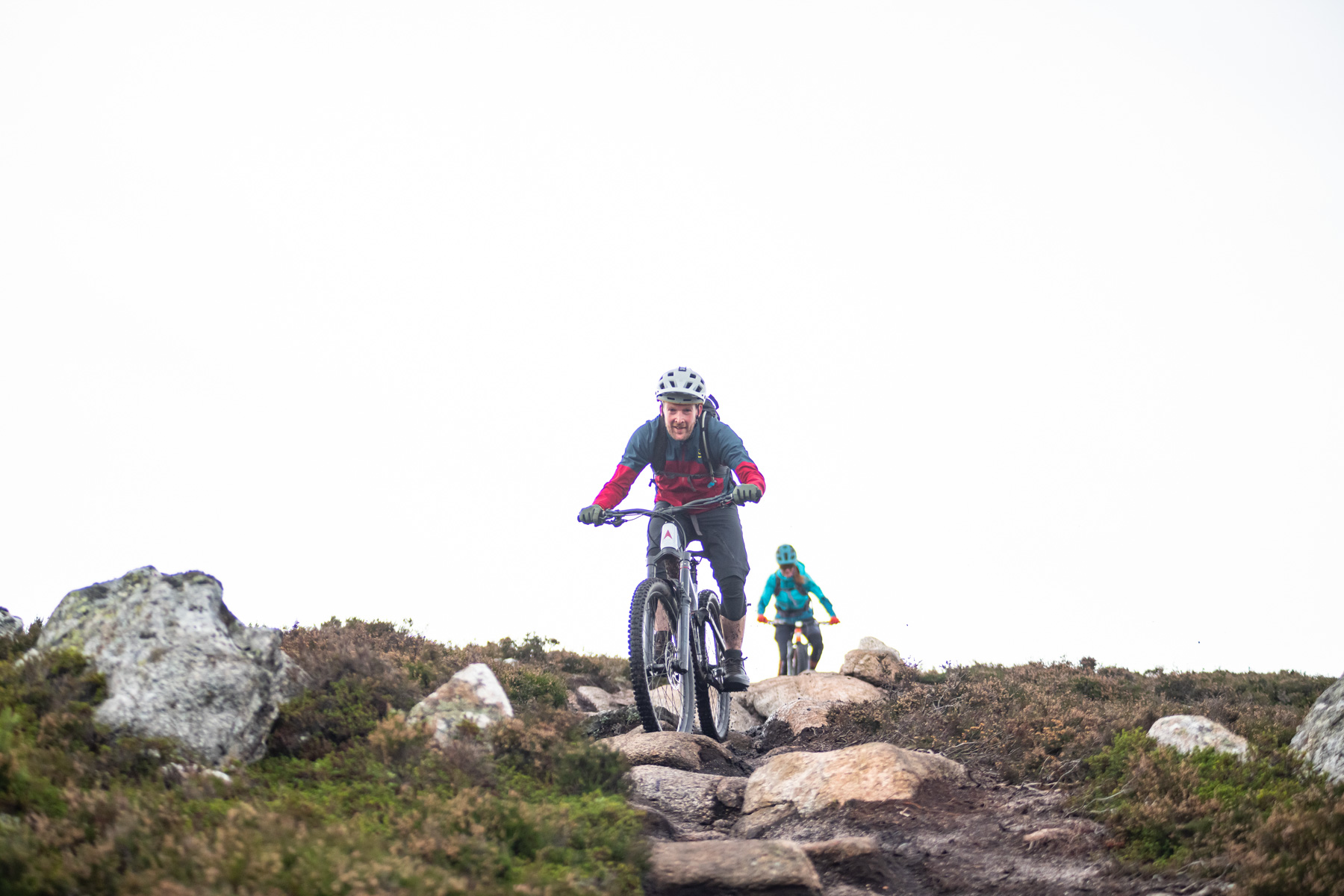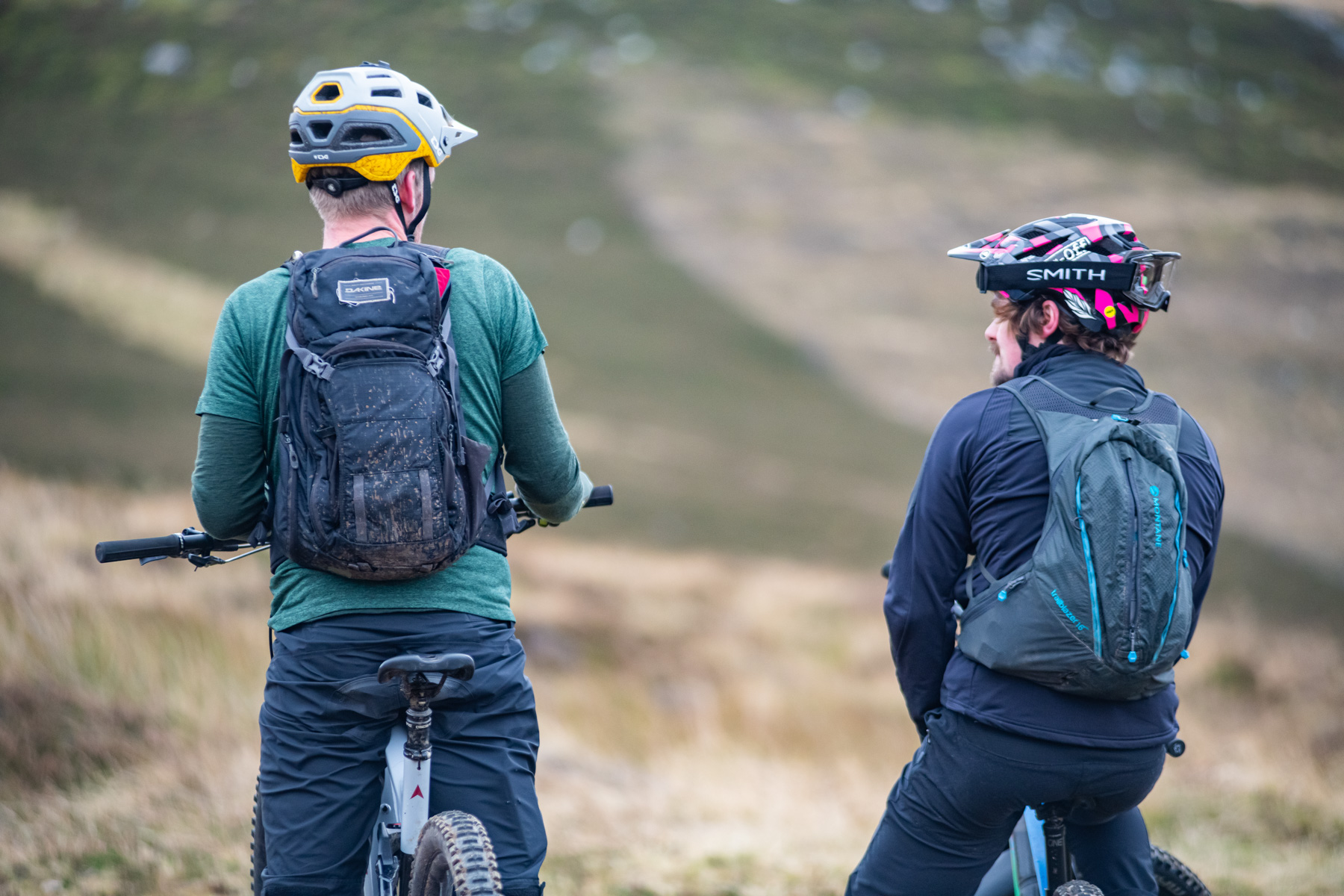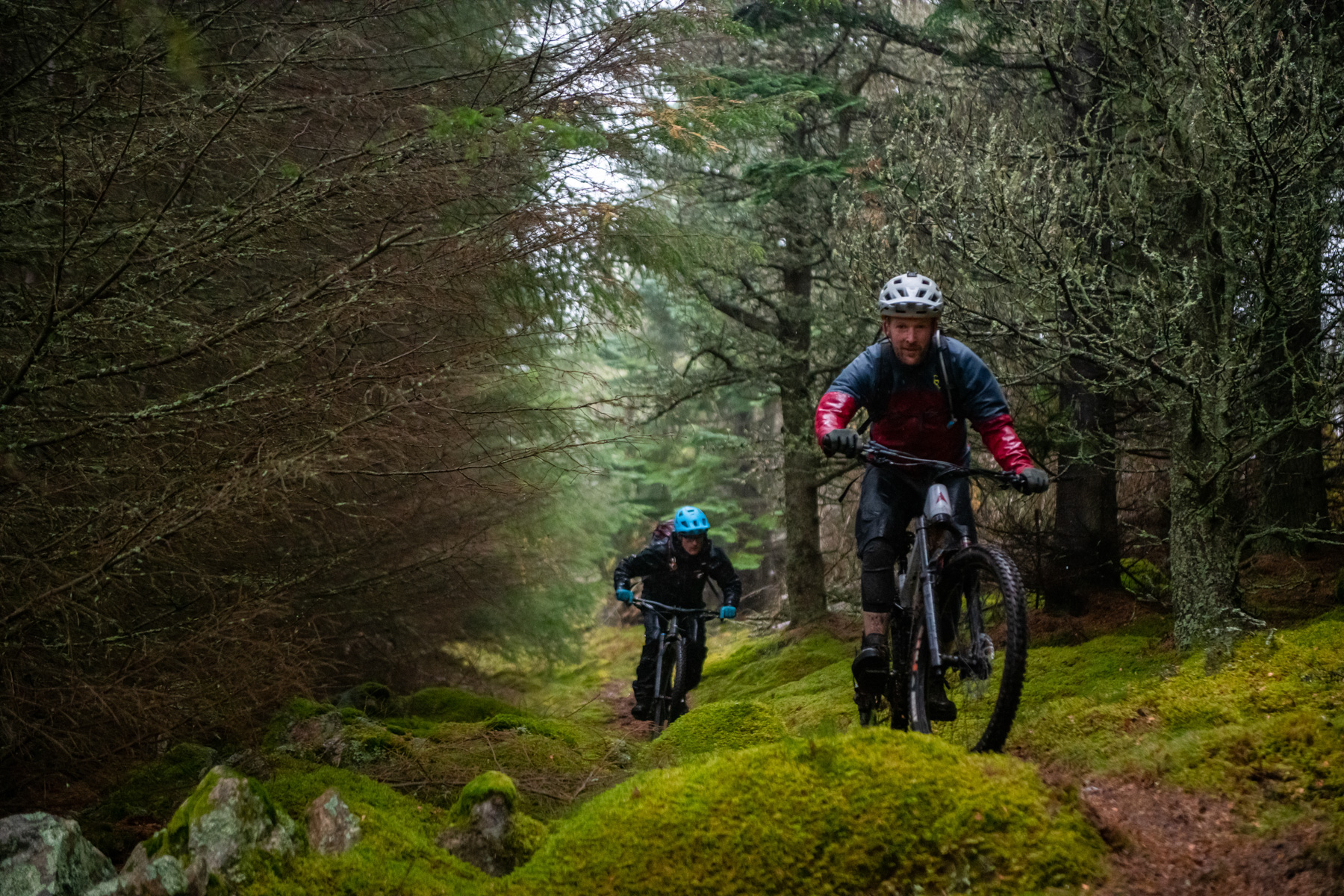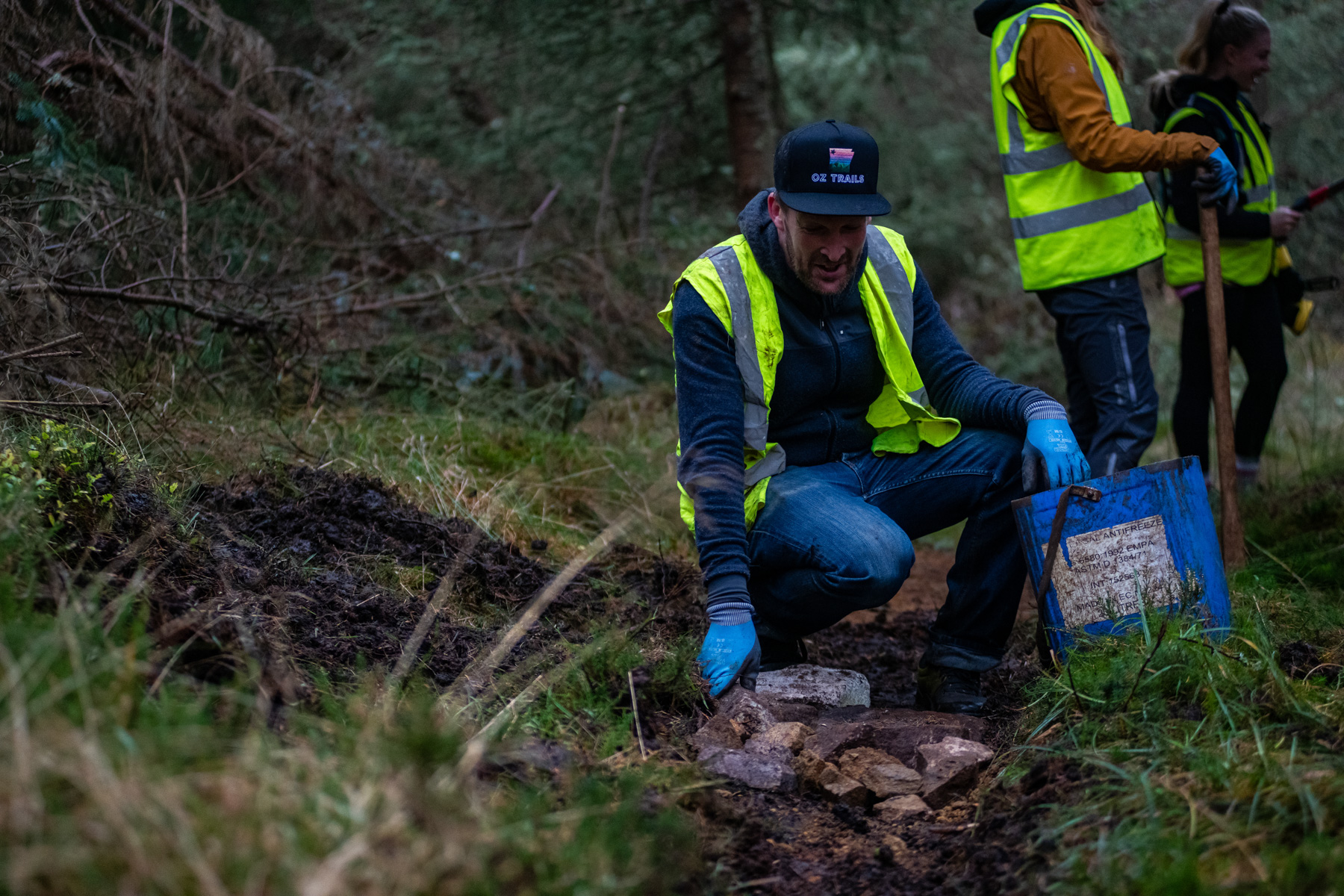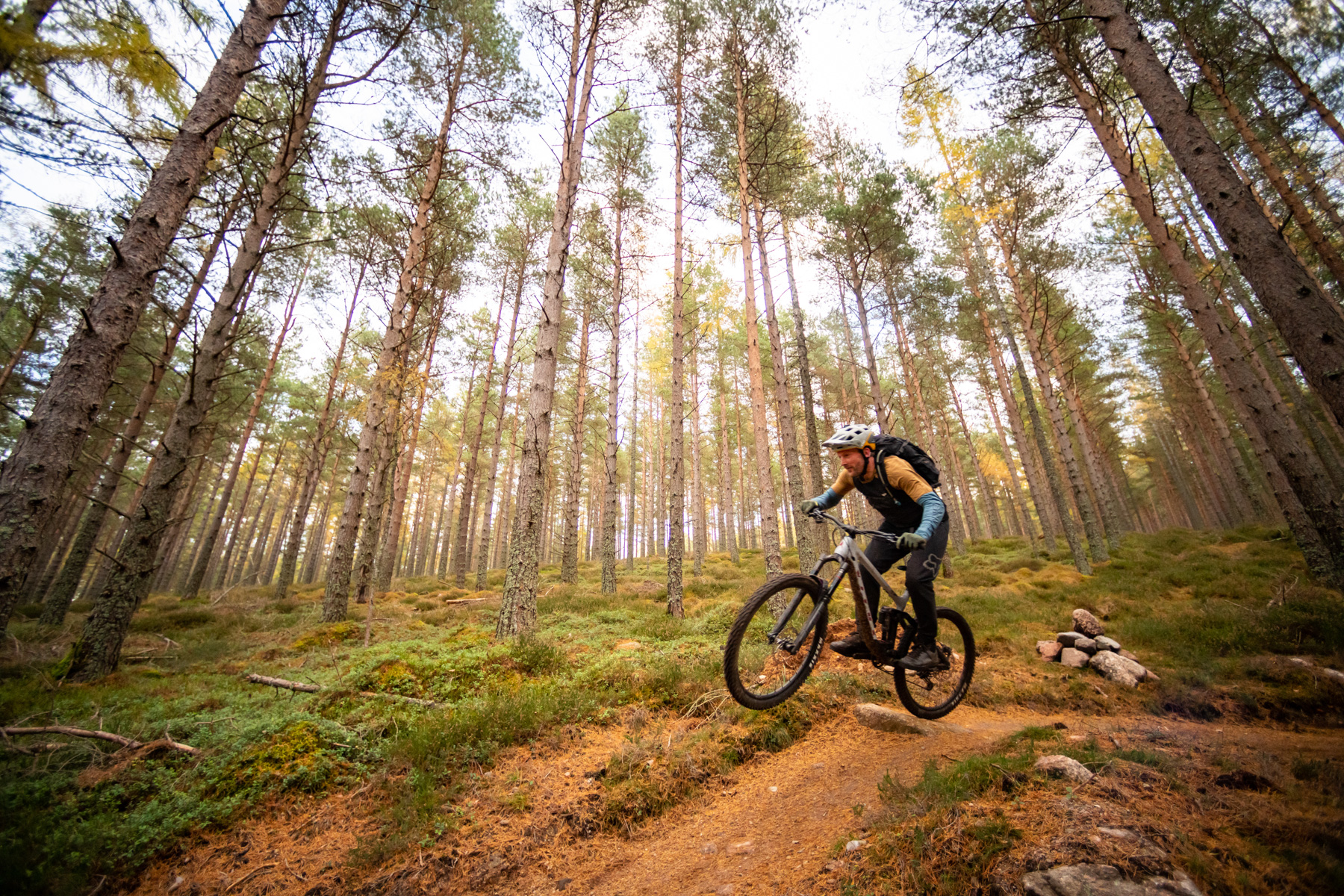What’s the recipe for building a thriving mountain bike destination? Antony heads north to find out.
Words Antony de Heveningham Photos Pete Scullion
Scotland is a good place for mountain biking. That’s an accepted fact, on a par with the earth being round. In the Borders, the Tweed Valley exerts a tractor-beam-like pull for riders coming up from England or down from Edinburgh. Fort William has the name recognition from hosting the World Cup, with lift-accessed riding. The trails on the west coast are justifiably raved about, as is the remote singletrack in the Highlands.
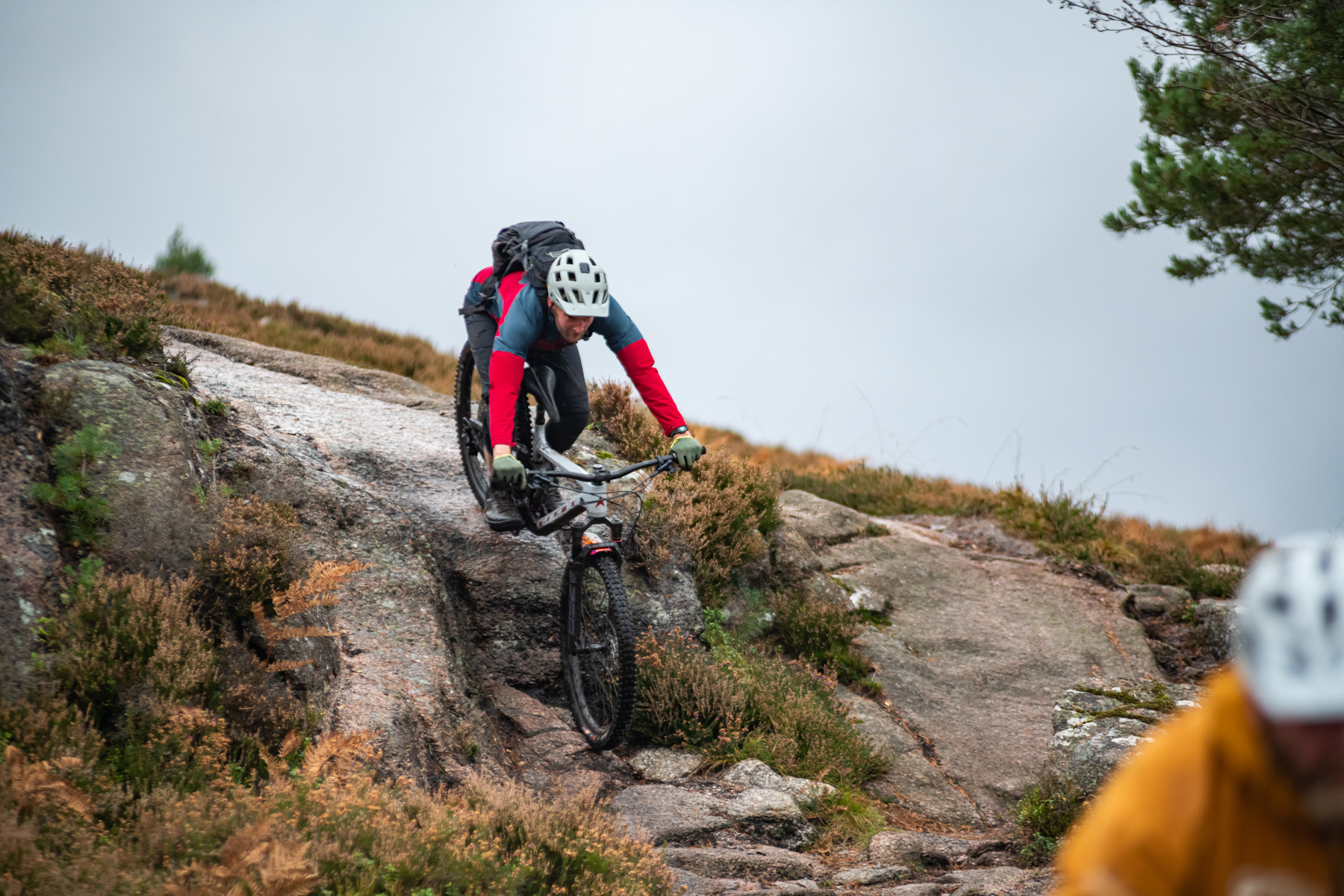
But not every region of the country gets the same share of the limelight. Aberdeenshire? Despite being bordered by a major city on one side and the Cairngorms on the other, for many years it only seemed to have one semi-official mountain biking venue, Pitfichie Forest, which has hosted downhill events since the early 2000s. While there were local riders building other below-the-radar trails, the unofficial network didn’t create much of a buzz around the area, or boost visitor numbers beyond a small handful of adventurous types.
Latest Singletrack Merch
Buying and wearing our sustainable merch is another great way to support Singletrack
Setting up for hotting up
Fast forward to the 2022 Scottish Mountain Biking Awards, and Aberdeenshire isn’t just the host venue for the conference. Local trail projects, businesses, community groups and mountain bike events are scooping up awards left, right and centre. As a delegate at the conference, I’ve just spent a week riding incredible trails, ranging from fun flowy blues to wild windswept ridgelines peppered with massive granite outcrops. The transformation of Aberdeenshire into a mountain biking hotspot isn’t the result of any single person or thing, but there are several players that have all helped to bring it about.
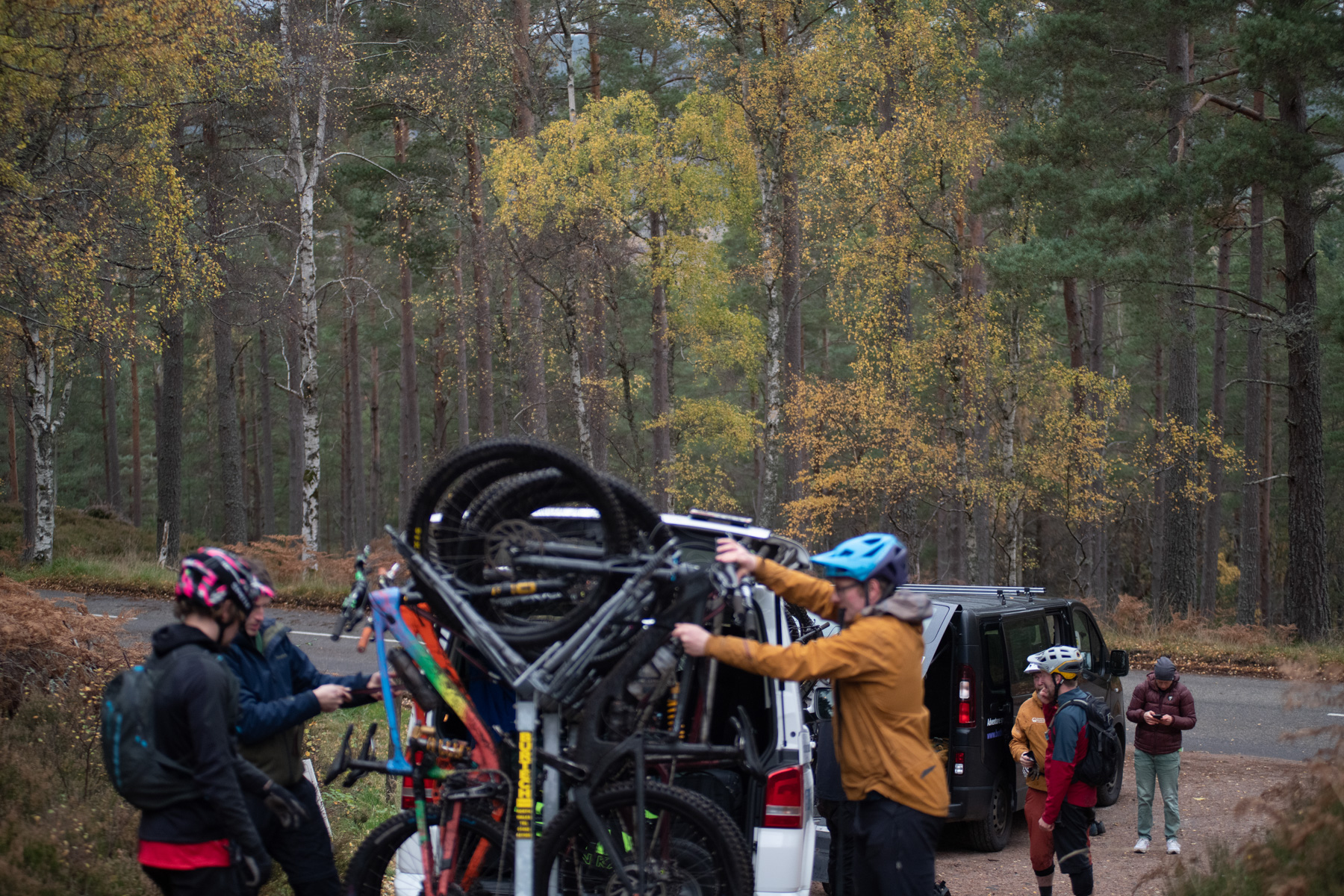
One of these is Developing Mountain Biking in Scotland, an offshoot of Scotland’s national sport cycling body that was created in 2009. It aimed to address the lull in trail development that followed the creation of the 7stanes trail centres. The centres include well-known destinations like Innerleithen and Glentress, which are many riders’ first taste of Scottish mountain biking. But by the mid-2000s a lack of investment and fresh trails to ride was beginning to tarnish the gleam. DMBinS’s plan to tackle this included working with riders to formalise some of the more challenging trails they built, and finding funding to build beginner-friendly riding facilities like blue trails and pump tracks. Now you can go to the Tweed Valley and your choice of ride could include anything from a balance bike trail to an EWS stage.
What if, like Aberdeenshire, no one built you a trail centre back in the early 2000s? How do you start catching up now, when funding for big recreational infrastructure projects is drying up faster than a tadpole in a sauna?
Global inspiration
The answer, it turned out, was to involve the local riding community in the process. There’s always been a small but tight-knit riding scene in the ’shire, and in late 2017 some of the key players started getting organised, resulting in the creation of the Aberdeenshire Trail Association. Its current chair, Chris Roper, recalls growing up there as a downhill riding and heavy metal-loving youth: “I don’t remember much of a mountain bike scene or many options for mountain biking. Pitfitchie had one track and that was really it!”
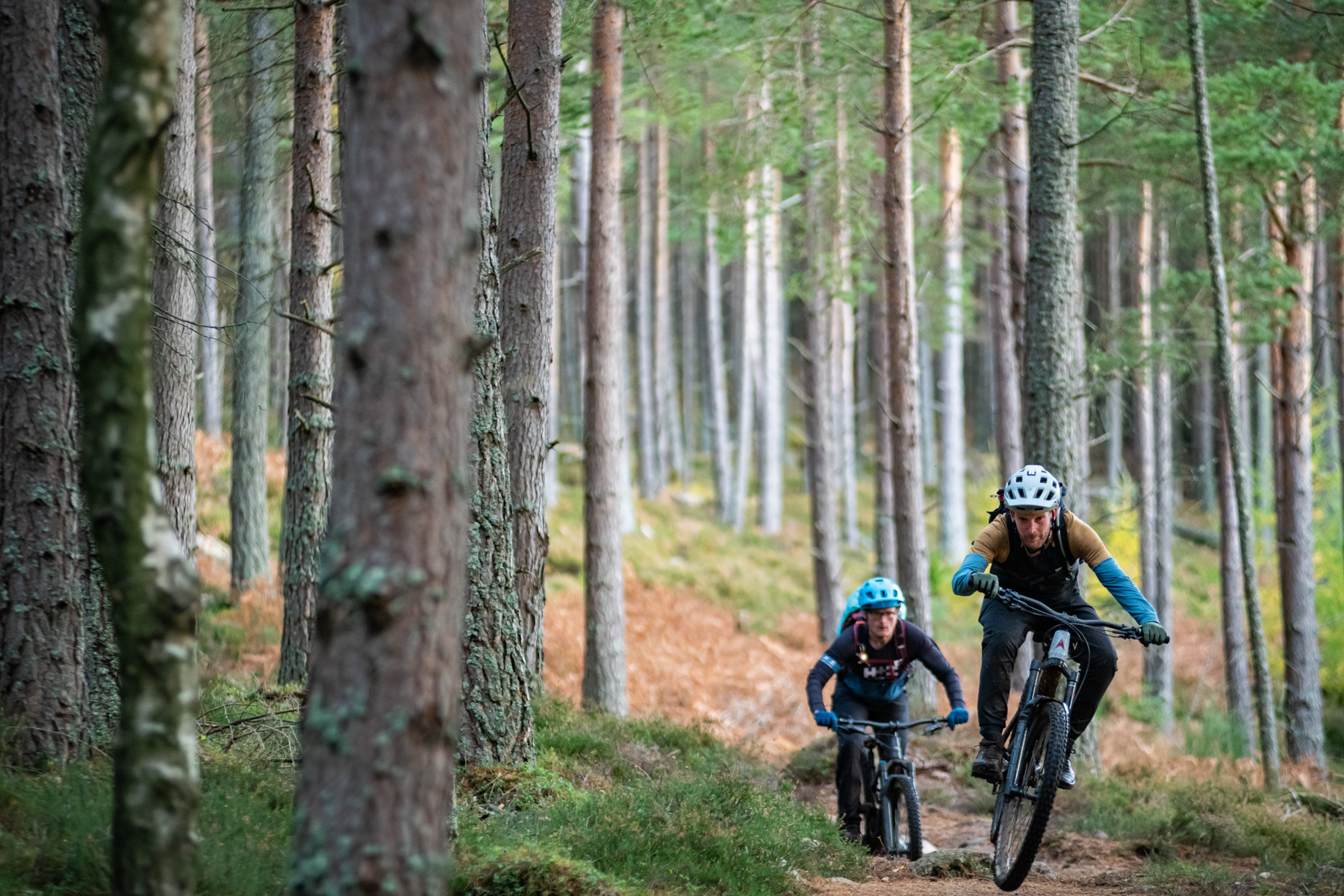
Taking off around the world to work as a ski, bike and rafting guide, he’d build trails with his school friend Tom Cole whenever he was back at home. “Some of the stuff we built was good, but would get destroyed after a wet winter. After I came back to the area in 2017, we decided to get serious. I’d seen what local trail associations could do from my time in New Zealand. Tom had spent time in Whistler and was thinking along the same lines. So he ended up emailing Graeme [McLean, head of Developing Mountain Biking in Scotland] and asking if we could set up something in Aberdeenshire.”
As it turned out, DMBinS was also looking at Aberdeenshire as a mountain bike destination, and hired Aberdeenshire regional coordinator Will Clarke in 2018. Fee Wallace, another of Aberdeenshire Trail Association’s three-strong committee, and IMBA Europe’s Trail Advocate of the Year, puts things unequivocally: “We wouldn’t be here without Will. He helped set up the first meeting that led to the creation of ATA. One of the presentations at the Scottish Mountain Biking Conference used the phrase ‘Where there’s a will there’s a way’ – you could hear everyone from Aberdeenshire burst out laughing!”
With Will – and by extension a national sports organisation – on side, conversations with landowners and countryside agencies became easier, although not right away. “When we started there was a bit of suspicion. People wanted to know who we were, why we were forming a trail association, that kind of thing”, explains Fee.
In Will’s words, he was “thrown in at the deep end. The first meetings were quite lively!” However, he was able to arrange formal training for the members of the new trail association as well as helping them to get funding to buy tools and insurance. The ATA got the green light to spruce up some of the venerable trails in Pitfichie, and momentum began to build.
“We proved session by session that we were doing the right thing”, says Chris Roper. “Next we were able to start having discussions with private landowners. A lot of our projects started with the question ‘How can we help the landowner?’. It also really helped having people like Doug on board.” Doug Blease was the first chair of ATA and, as a professional ecologist, was able to reassure land managers about the environmental impacts of letting a group of mountain bikers armed with trail tools loose on their land.
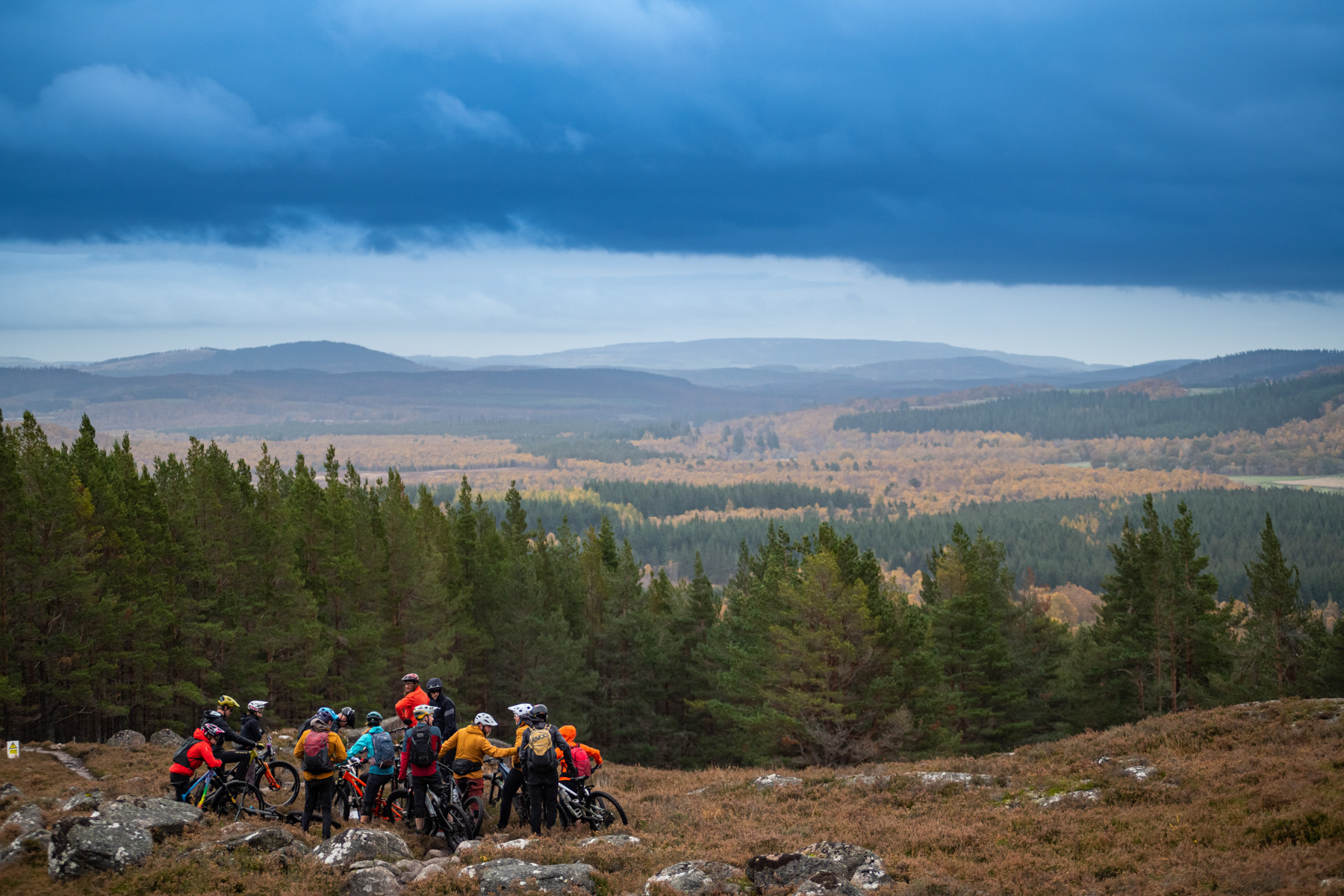
First impressions
A landmark early project for the trail association was a facelift for a popular trail on the Glen Tanar estate. Finishing with a drop over a historic drystone wall and a fast exit onto a busy road, it had the potential to be a major headache for the landowner. The trail association rebuilt the wall and rerouted the trail ending, making itself a useful ally in the process. “We know that Glen Tanar and some of the estates we’ve worked with will now stand up for mountain bikers in discussions with other landowners”, says Chris. “It’s changed the image of mountain bikers from dudes in flannel shirts who don’t care about the environment into something much more positive.”
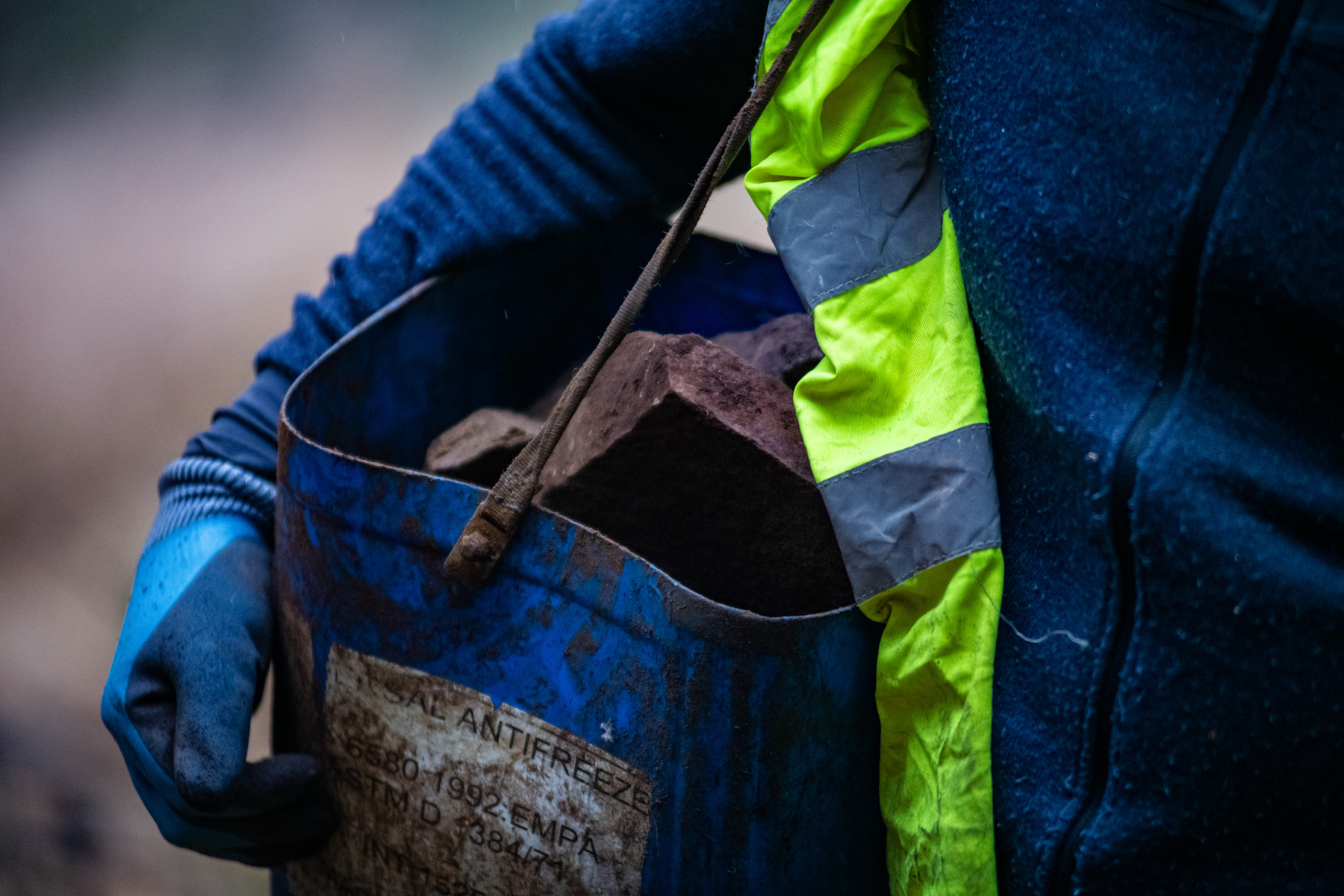
The trail most often described as a must-ride in Aberdeenshire is Ballater’s Heartbreak Ridge, a feast of techy singletrack that crosses a spectacular hillside via a series of giant granite slabs. “It’s one of those trails that seems to have always been there”, says Chris. “It’s just been ridden in by mountain bikers trying to link the rocks together. In the summer of 2017 it was in perfect condition, then it started to deteriorate. The trail became metres wide in places as people rode around the bogs. It also used to finish with a drop over a farmer’s wall, then you’d ride through the farmer’s field, jump over a fence, and basically go through someone’s garden. The access road to the trail was also a sloppy horrible slog.”
With a much-loved trail getting wrecked by overuse, as well as testing the boundaries of Scotland’s responsible access laws, it was time to call in some outside help. “In our first meeting, we set a long-term goal to employ staff. It didn’t quite work out that way, but three of us have still ended up being employed to build trails.” Chris’s school friend Tom was one, having started work for a local firm of environmental engineers, including occasional forays into mountain bike trails. His firm was contracted to repair the nightmare access road and the top section of Heartbreak Ridge, while ATA volunteers helped build a new bottom section, taking the trail away from angry farmers and irate local residents. Tricky access meant that much of the work was carried out by hand, but despite the volume of traffic it receives, the trail is still one of the area’s highlights, finishing with a series of steep slabs that test the limits of traction, even on the ultra-grippy local rock.
Molehills before mountains?
With downhill, enduro and big mountain trails buffed up and ready to accept visitors, it seemed like Aberdeenshire was ready to step into the spotlight. But not quite yet. In Fee’s words: “There was no middle ground – almost no entry level or progression trails. We’re well placed for big mountain riding here, so the question was ‘How do we make big mountain days accessible?’”
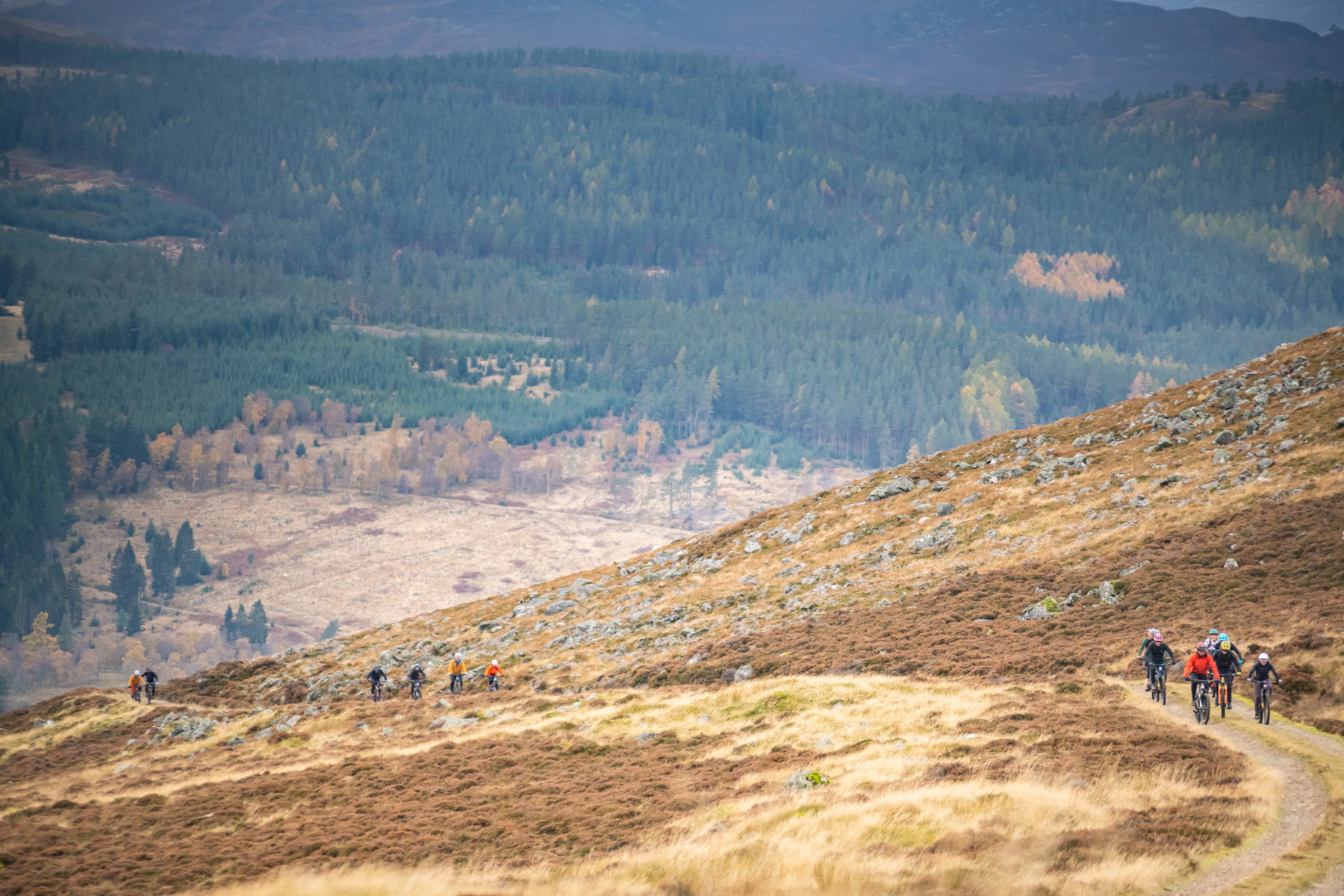
Working with a community forest trust in Aboyne, the group revamped an existing unofficial trail, Chutney, then local contractors built a new lower section, Relish. Both trails have a natural feel, are easy to ride laps of, and designed to be fun regardless of skill level, making them an instant hit with local riders and visitors alike.
The desire to be inclusive is carried across in the ATA’s governance. It currently has a majority of women on its board and has even run female-only trail days. Fee sets out why: “Dig days have this image where it’s just a bunch of guys lifting heavy rocks, and if you turn up as a woman, you’re handed a pair of shears and told to go and trim some undergrowth. Instead of doing that, we divide into different tasks and ask who wants to do what. Often on our dig days it’s the girls lifting the heavy rocks!”
ATA now looks after trails in four forests, and has been given permission to start developing trail networks in another three. Regional organisation North East Adventure Tourism also helps by giving grants to accommodation providers to put in MTB-friendly facilities like good quality bike storage, and has worked with high-profile riders like Scotty Laughland and Ben Cathro to showcase the variety and quality of riding on offer.
Stormy seas
Although mountain biking in Aberdeenshire seems to have benefitted from an incredible amount of good luck, there’s also been a lot of hard work and adversity along the way. The pandemic restricted dig days and made starting new projects nearly impossible. Then in late 2021 the region was hit by a series of massive storms, closing entire forests and blocking trail networks. But even these have had a positive side, thanks to recovery funding which has subsidised trail clearing and development. Fee points out that it’s also made businesses view two-wheeled visitors in a different light: “The amount of them that didn’t know how reliant they were on mountain bikers became apparent after the storms.”
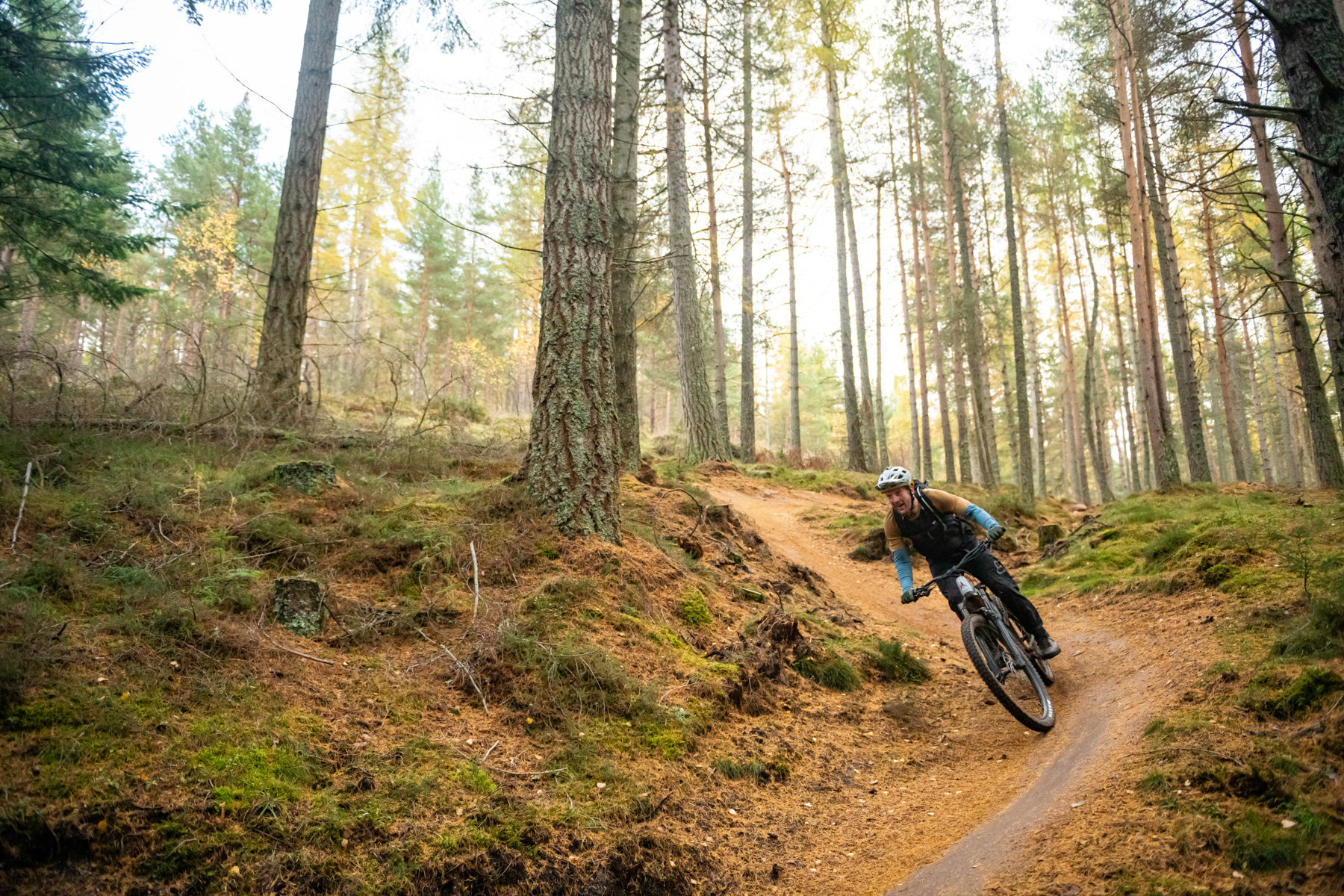
The biggest news in trail development locally, though, is that the region is finally getting its own trail centre, at the tiny village of Tarland. “We got really positive news last week”, says Chris, who also sits on a steering group for the project, “some extra funding that will take us over £1 million.” With a mix of over 19km of blue, red and orange graded trails set in a beautiful privately owned forest, accessed via a gentle climb, it has the potential to draw in a much wider range of visitors.
With local mountain bikers like Tom undertaking the build, all the trails at Tarland are being constructed in the most sustainable way possible, which includes extracting materials on site, grading them with hand tools, and finally using the best stuff to build a hard-packed, but rain-permeable surface. The result is a perfect network of salmon-coloured singletrack flowing through the golden spruce forest. The brief preview we get on the press trip bodes really well for when the finished trail centre opens in spring 2023.
While there are more handy riding destinations for much of the UK, not many places can compare to Aberdeenshire for the variety of riding on offer. “You can have big mountain days, steep tech, and family riding, all in really close proximity”, says Fee. With the range of trails on offer growing year on year, it’s looking like the Aberdeenshire scene will continue going from strength to strength.
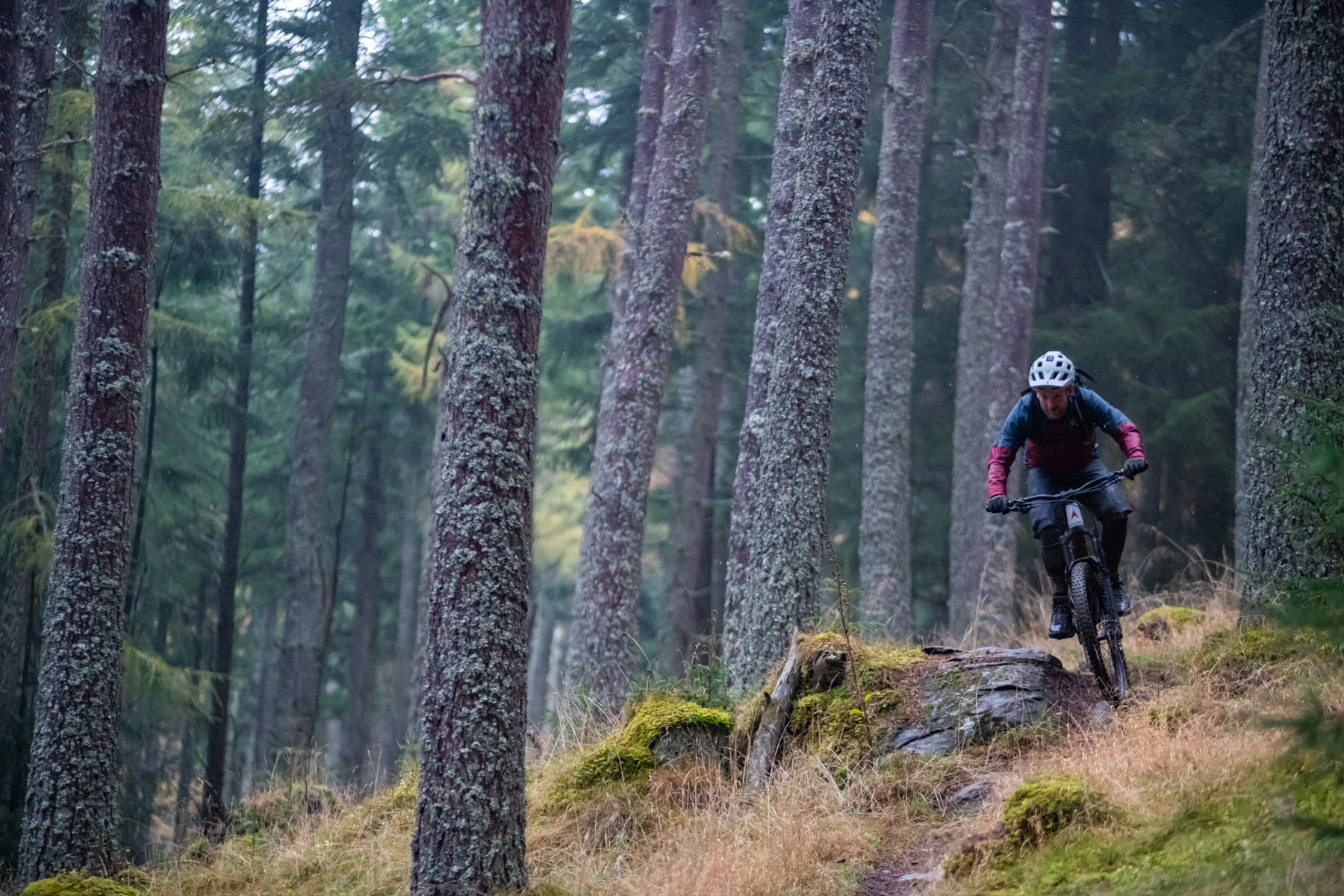
Want to visit?
First time in Aberdeenshire? Here are some of the must rides:
Pitfichie
Forty-five minutes from Aberdeen, Pitfichie is where it all started for the local riding scene. Expect engaging trails peppered with loads of lumpy granite. The main downhill track is still going strong and has had a facelift from local trail contractors CRC, while White Lady and Macchiato are two relatively approachable enduro trails that the ATA has adopted and upgraded.
Before riding, head to Bike Bothy Pitfichie for a browse and to stock up on tubes, tubeless plugs and tyre inserts (did we mention it was rocky?). This spectacular shop is housed in a converted church and it’s also the flagship Scottish dealer for Bird Cycleworks.
Heartbreak Ridge
The Aberdeenshire trail you’ve probably seen on the internet starts with a stiff climb from Bridge of Muick, with views over the Balmoral Estate and up to Mount Keen. The descent is famous for its massive – and in some places, steep and off-camber – granite outcrops, bridged with hand-built rocky singletrack.
Back in Ballater, you can stop off at one of the lovely cafés and hotels, perve at the shininess in the Cyclehighlands bike shop, or head up the opposite side of the hill to ride Mastermind, a classic steep hand-built track through the woods.
Aboyne
The community-owned Birse forest is home to Chutney and Relish, two of the most fun and accessible trails in the area, as well as some steeper rider-built trails. You can ride laps of these all day before heading back to the village for frankly outrageous burgers at the Boat Inn, or trying some craft gins at local distillery Lost Loch Spirits.
Tarland
Currently Tarland is home to a tiny, beginner-focused bike park, but that’ll all be changing in early 2023 when Tarland 2 opens – a full-blown trail centre with everything from balance bike-friendly blues to bike park jump lines, it’s all been built from materials sourced on site by CRC.
